Lost in Miraloma Park
A 1947 prankster makes a very public comment on a San Francisco neighborhood West of Twin Peaks.
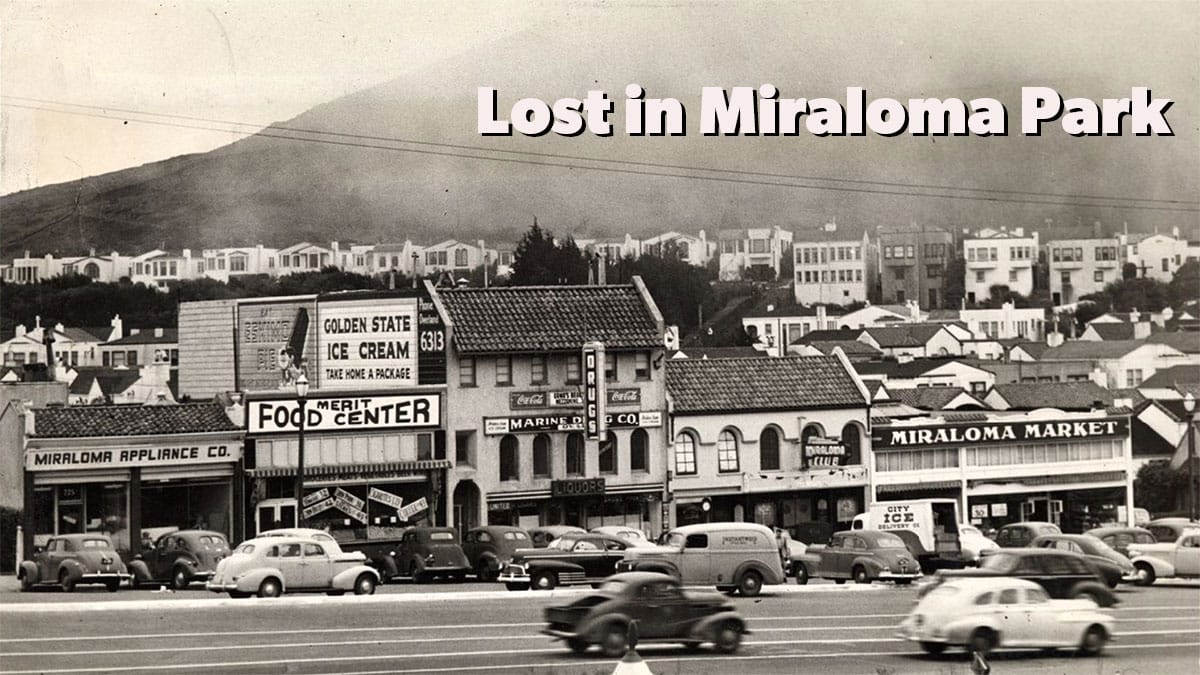
It still happens to me. Sometimes it’s foggy, but it’s happened on crystal-clear days where the East Bay hills are a high-definition vision through the windshield. I get distracted on a curve by some house detail and suddenly Omar has turned into Sequoia and then Bella Vista and I am again lost in Miraloma Park.
I feel no shame in it. Eventually, after loops and curves, I will hit Foerster or Teresita and those tributaries will lead downhill to Monterey Boulevard, my escape route out of the enchanted subdivision.
Are you lost already? Miraloma Park is a charming neighborhood of single-family homes built between the late 1920s and early 1960s on the slopes of Mount Davidson. It’s those windy streets behind Tower Market you avoid when driving on O’Shaughnessy Boulevard to Glen Park or down Portola Drive to West Portal and points south.

Even residents of Miraloma Park may have felt lost the morning of February 17, 1947. The hillside stones that usually advertised their neighborhood had been rearranged to spell “L.A. City-Limit.”
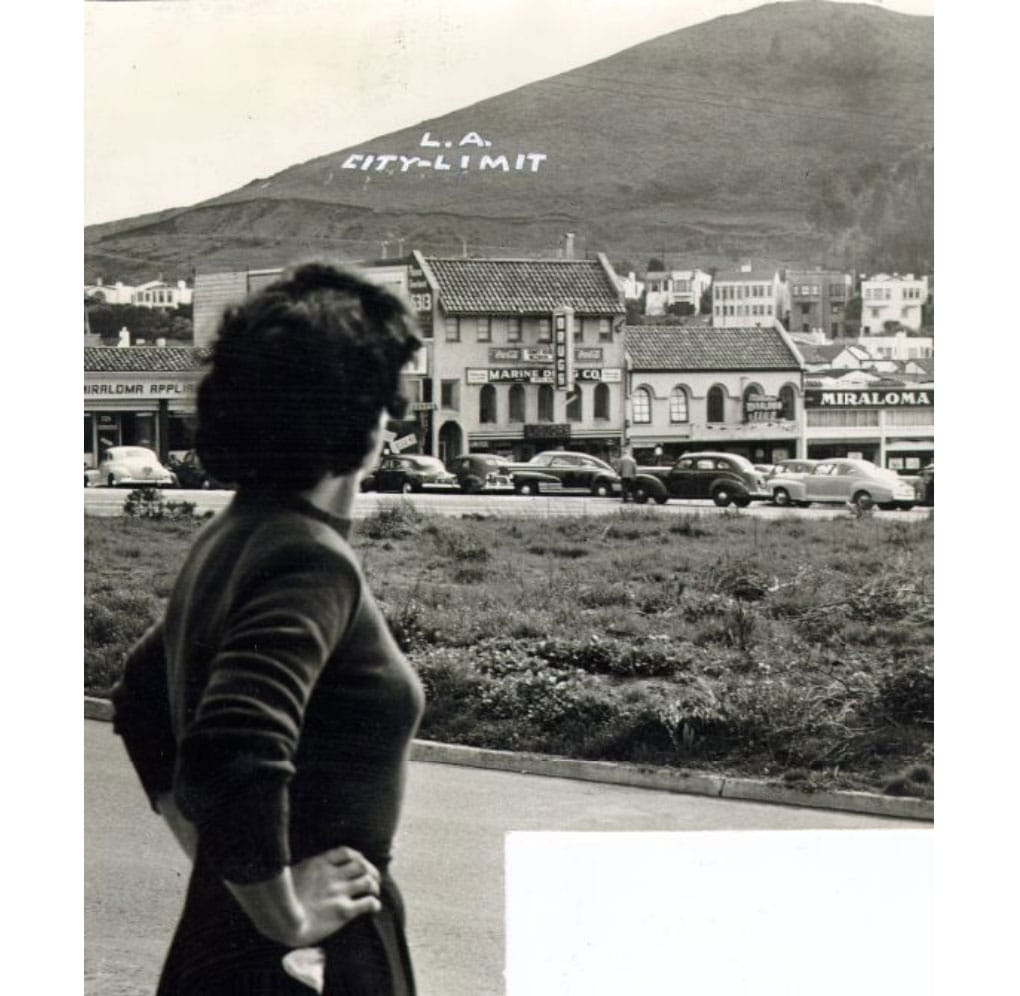
What was up with that?
A Maze for Moderate Means
In 1926, the Meyer Brothers home building company bought 26 acres of a eucalyptus forest planted by Adolph Sutro around Mount Davidson in the prior century. The company promised a new subdivision with “some of the atmosphere of the early Spanish period.” This meant stucco facades, rooflines of red clay tile, and a few Spanish street names like Arroyo, Gaviota, Reposa, and Isola. To hedge its bets, “English architecture” was also advertised.
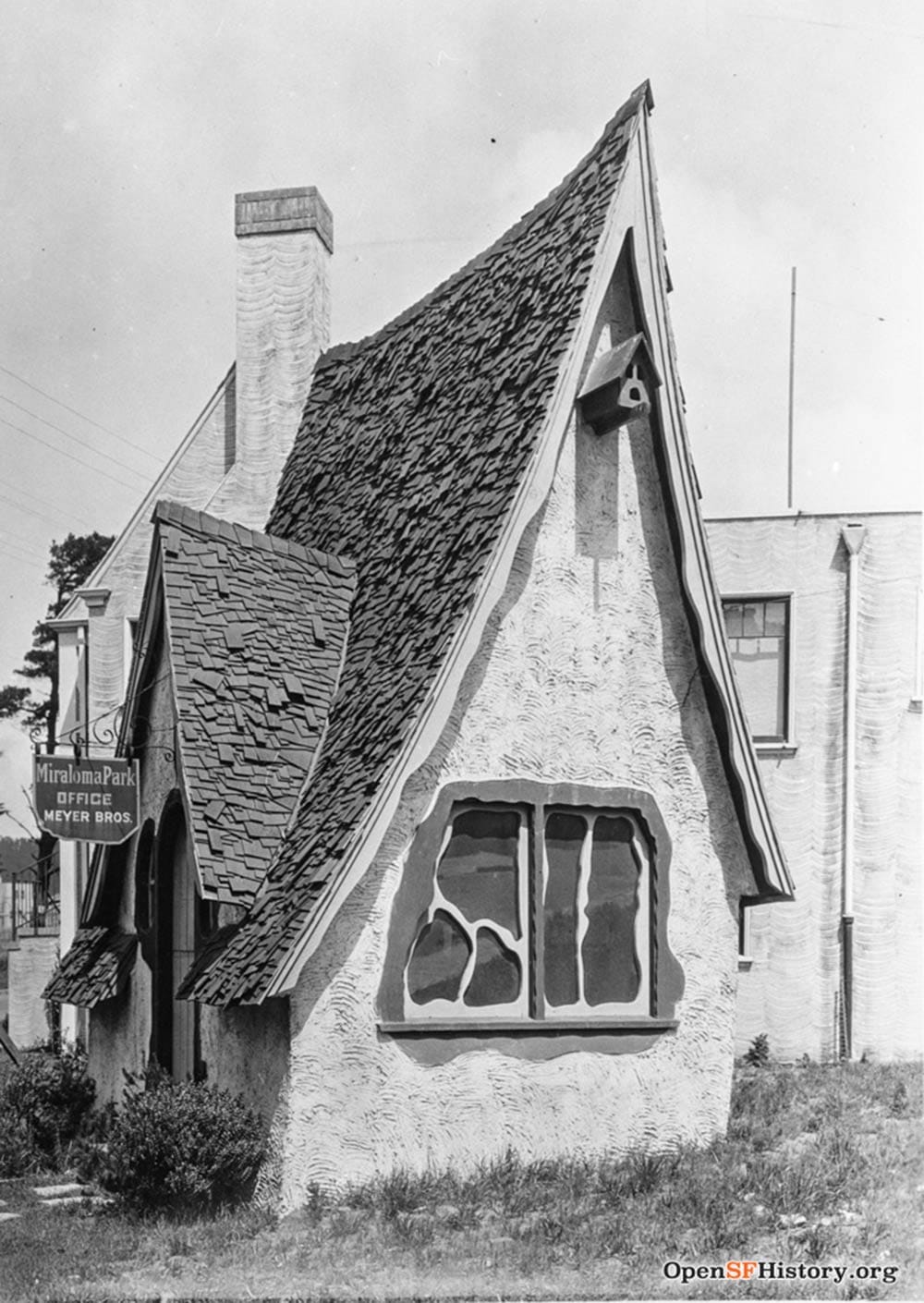
But first there were a lot of eucalyptuses to rip out. Meyer Brothers claimed to have invented “new methods” of uprooting big trees (yanking them over with tractors). Work went fast in the Roaring 20s, and within two months the first Miraloma Park houses were on sale along Portola Drive.
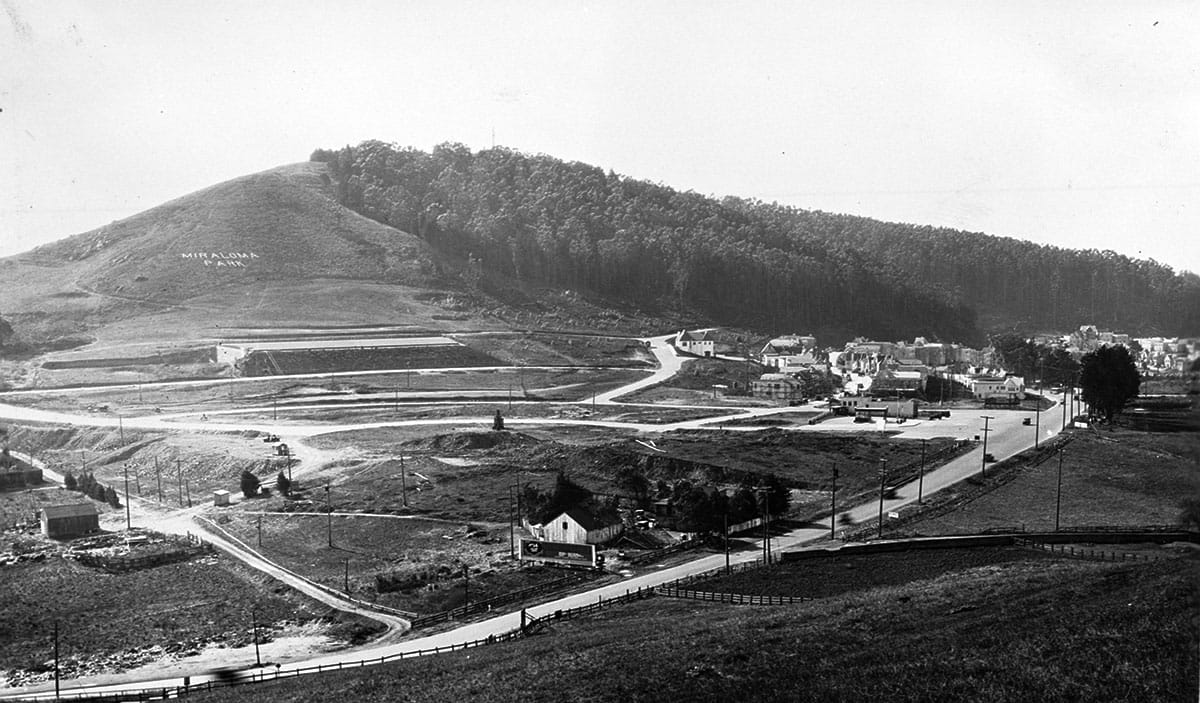
When I think of Meyer Brothers’ homes, I think of breakfast nooks. The firm popularized small dining parlors beside entry doors, where toast and coffee could be enjoyed in a street-facing bay window.
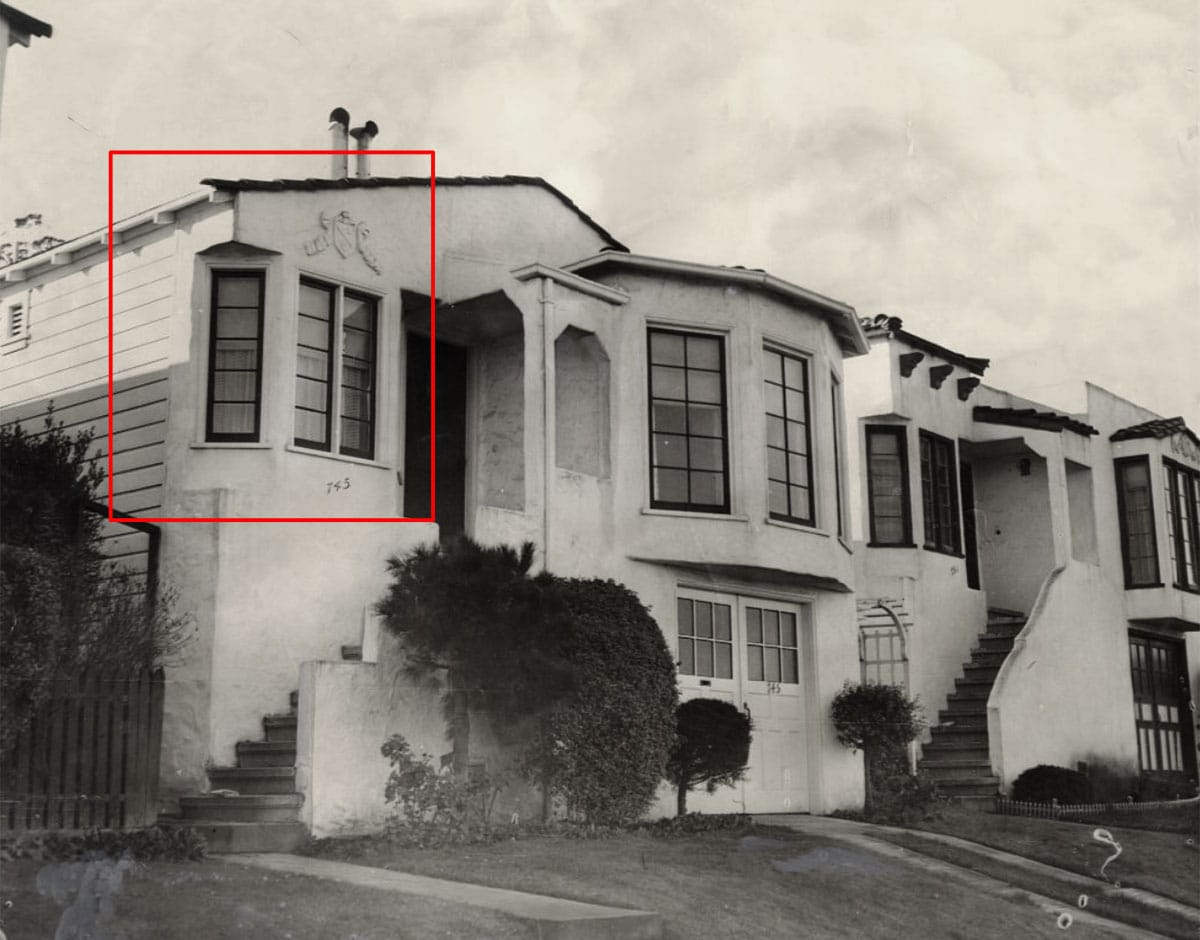
Nicknaming themselves as “The Homemakers,” Meyer Brothers’ floor plans were designed so “the modern housewife and her arduous labors of housekeeping shall be lightened as much as possible.” Or so the ads said, a crafty way of saying they sold small houses with a compact layout.
But these small assembly-line homes were affordable. The Meyer Brothers always emphasized their products were for buyers of “moderate means.” Miraloma Park houses were initially priced at $7,500 in 1926, which is about $130,000 in 2024 dollars. By the mid 1940s, houses got as low as $5,000.
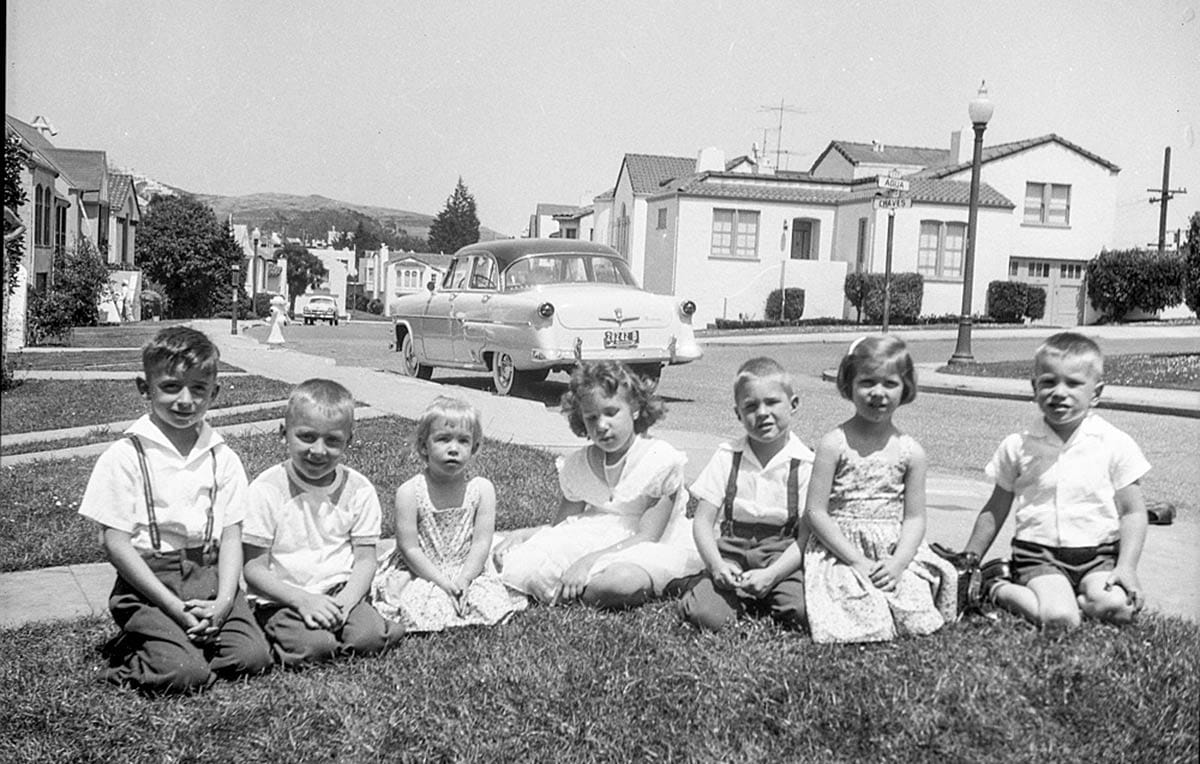
While cheaper, the homes in Miraloma Park had some of the same restrictive deed covenants as its tony “residence park” neighbors, including the explicit banning of ownership or residency by minorities.
The Daily Drive
Miraloma Park wouldn’t have happened without the rise of the automobile. While the first homes on Portola Drive weren’t far from the West Portal streetcar station, most of the tract lay farther uphill. A tired office worker living in the heart of Miraloma Park could face a 25-35-minute hike from the streetcar each evening. And even after a commercial strip was built on Portola Drive getting a loaf of bread or a gallon of milk still usually meant a car trip.
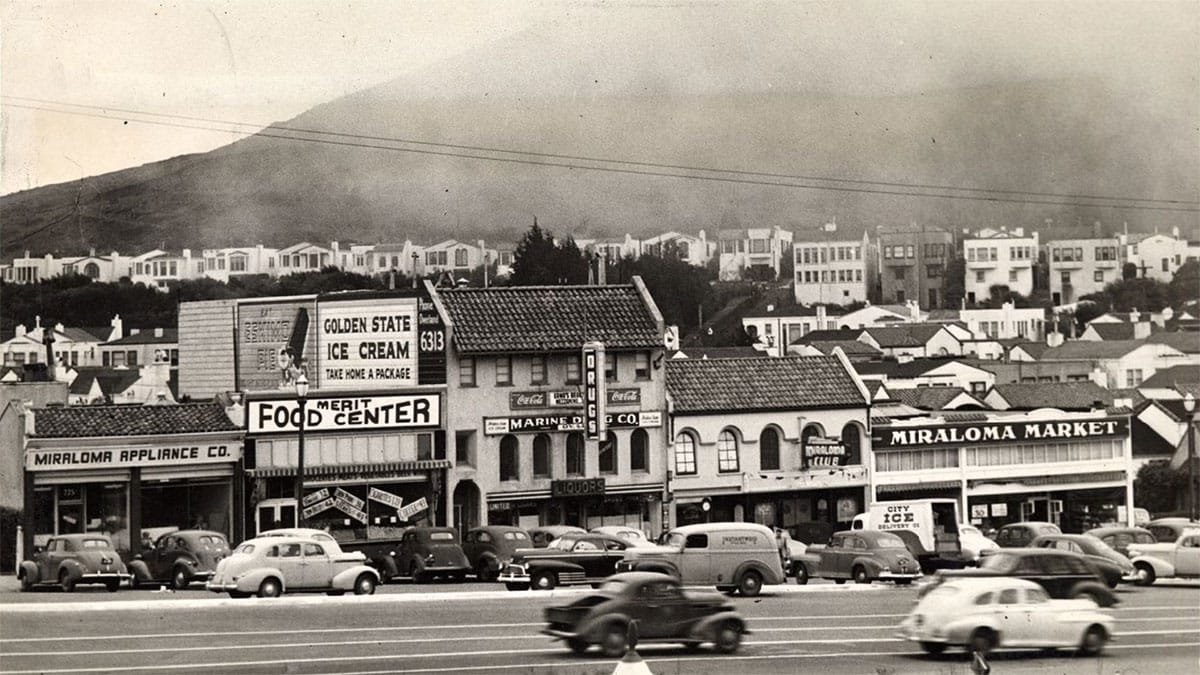
This was the dawn of the modern suburb, an early experiment within San Francisco city limits. Miraloma Park was a car-dependent enclave with its own small strip mall: a template that would be used by developers to fill up most of the Peninsula, the East Bay, and Marin County just before and after World War II.
The automobile took over everywhere, but became essential in places like Miraloma Park. A 1979 study by the Coro Foundation found that 35% of San Franciscans used public transportation to get to work while 47% used an automobile. But in Miraloma Park just 22% took the bus while 72% drove.
I Love LA
Lily-white communities of tract homes with front lawns, mom in the kitchen, dad off to work in the family car. With Miraloma Park, these elements of much-parodied 1950s America arrived in San Francisco twenty years early, even if we usually associate them with a different west coast city.
In 1947 San Francisco, someone evidently made the connection ten years before Leave it to Beaver hit the airwaves.
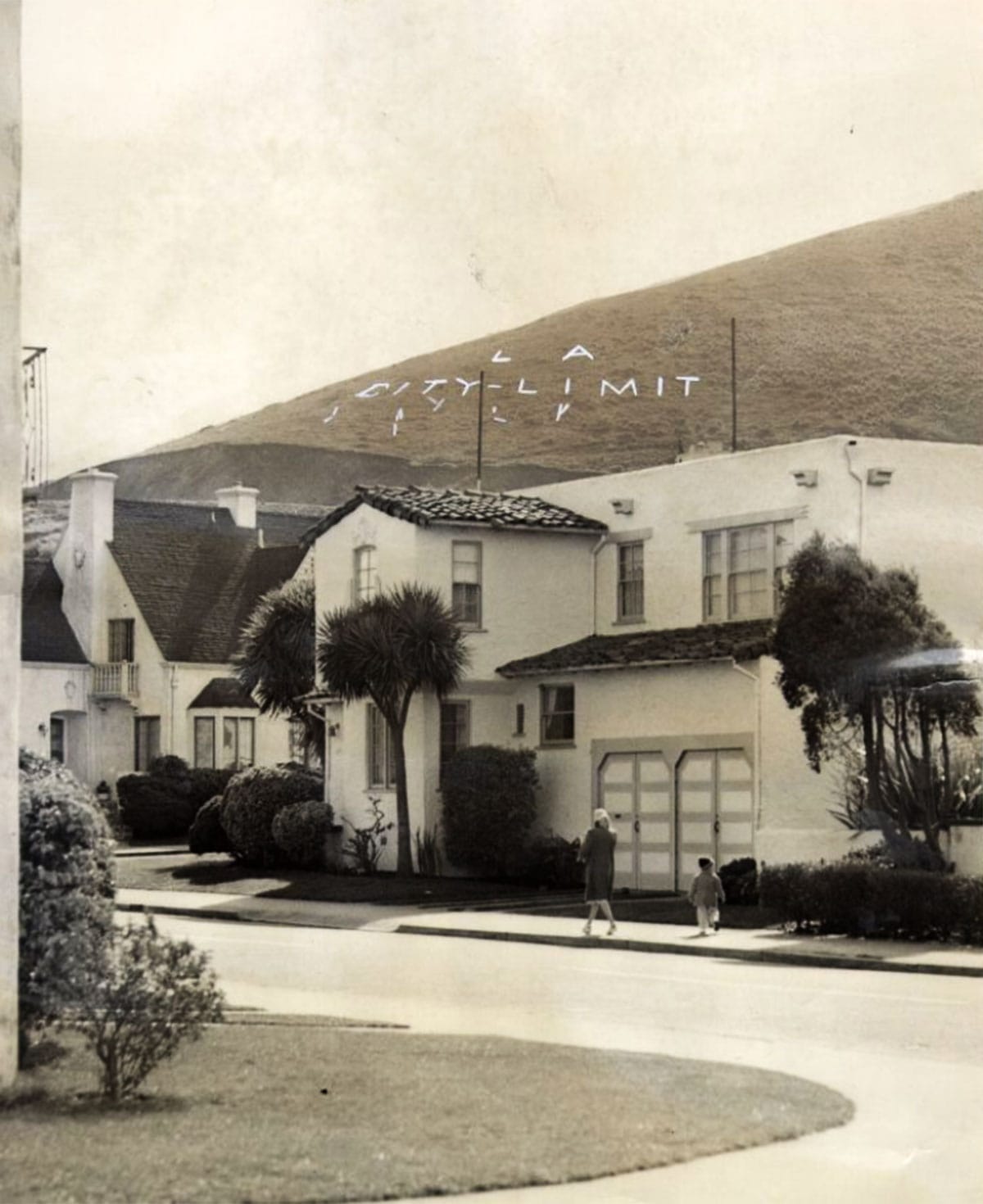
I like to think of the pranksters who rearranged the hillside signage as beat poets making a pointed comment on where the country was headed. Cigarettes hanging from corners of mouths—maybe one wearing a beret—they worked in the cold fog of the night, knowing that nothing would agitate locals more than comparing them to a Southern California rival.
Now, perhaps, the scales will fall from the eyes of you housewives and company men. See where you are and where you are heading? See how lost you are? Miralomans, awaken!
Or maybe it was a couple of visiting Dodger fans.
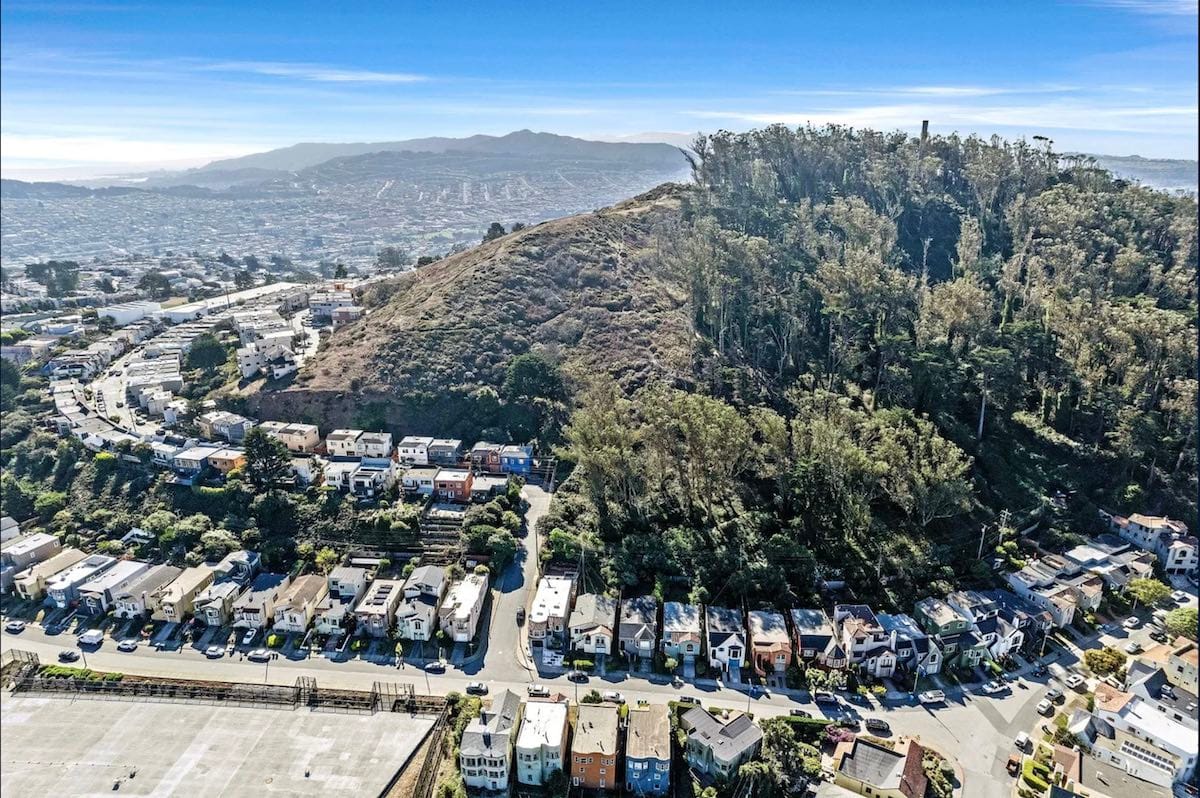
Woody Beer and Coffee Fund

Tomorrow night (February 8, 2024), I will be at Heritage Happy Hour at The Irish Bank (10 Mark Lane) from 5:00 p.m. to 7:00 p.m. If you’re downtown, come on by. While this is a casual no-host event organized by SF Heritage and the city’s Office of Small Business, it’s also a good time for me to spend some of the Woody Beverage Fund on you.
Great thanks to Steve C. (F.O.W.) for yet another generous donation to the fund. Is it your turn? Let me know when you’re free!
Sources
“‘Homemakers’ Build 57 Richmond Homes,” San Francisco Chronicle, April 1, 1922, pg. 12.
“Meyer Brother Open Miraloma Park, New Tract,” San Francisco Examiner, February 6, 1926, pg. 9.
“256 Homes to Be Erected in Miraloma Park this Year,” San Francisco Examiner, March 13, 1926, pg. 13.
“Meyer Homes Please Buyers,” San Francisco Examiner, August 19, 1922, pg. 8.
Ad, “Opening Sale, Miraloma Park Business Center,” San Francisco Examiner, March 17, 1928, pg. 10.
“Kilroy Got Here,” San Francisco News, February 17, 1947, pg. 30.
Rosalie Kuwatch, “History of Miraloma Park,” (unpublished manuscript), 1984.

